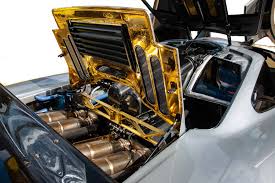Strange Uses for Gold
Gold is such a hot commodity that there just isn’t enough of it to go around. Although more than half of the world’s gold is used as a shiny trinket that simply dangles off of a person’s ear or wrist, there have been much stranger uses for gold over the years.
10% of the gold’s gold goes to the electronics industry, yet gold is far too valuable to be used as bling for the necks and wrists of engineers and programmers. Because of gold’s superior conductivity, it is the only material on Earth that can be used to produce corrosion-free electronics. There are approximately 50 milligrams of gold in every cell phone that rolls off of the assembly line. With a billion phones in use around the world, all of that gold can add up pretty quickly. In fact, some professional scrappers in countries around the world have made a career out of dissolving old electronics in a corrosive solution until they are left with nothing yet trace amounts of pure gold.

of golden thread is used for fancy embroidery of apparel.
In photography, gold toners are used to shift the color of silver bromide black-and-white prints towards brown or blue tones, or to increase their stability. Used on sepia-toned prints, gold toners produce red tones. Kodak published formulas for several types of gold toners, which use gold as the chloride.
Gold is a good reflector of electromagnetic radiation such as infrared and visible light, as well as radio waves. It is used for the protective coatings on many artificial satellites, in infrared protective faceplates in thermal-protection suits and astronauts' helmets, and in electronic warfare planes such as the EA-6B Prowler.
Gold, as well as other precious metals, is used as the reflective layer on some high-end CDs. This is actually where the concept of awarding best-selling

expensive cars in the world, McLaren, use gold foil in the engine compartment of their F1 model.
Metallic and gold compounds have been used for medicinal purposes historically and are still in use. The apparent paradox of the actual toxicology of the substance suggests the possibility of serious gaps in the understanding of the action of gold in physiology.
Gold is perhaps the most anciently administered medicine used by Shaman. In medieval times, gold was often seen as beneficial for the health, in the belief that something so rare and beautiful could not be anything but healthy. Even some modern forms of alternative medicine assign metallic gold a healing power. We wouldn’t recommend consuming your gold, as it has a scientific history of being toxic.

Engine of the Mc Loren F1
In the 19th century, gold had a reputation as a "nervine," a therapy for nervous disorders. Depression, epilepsy, migraine, and glandular problems such as amenorrhea and impotence were treated, and most notably alcoholism.
A lot of uses for gold over the years are just for looks, and it’s not just jewellery. It is added to cranberry glass as a coloring agent. Gold is not only the most functional precious metal in all of the world – it’s also the vainest.
As we can see, gold has had many uses over the years; some practical, some cultural, and some downright strange. However, if you enjoy your gold, do so with the knowledge that it is one of the world’s most finite and sought after materials.








